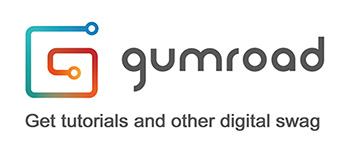 The trouble with perception begins with the fact that everyone tends to have a slightly different one.
The trouble with perception begins with the fact that everyone tends to have a slightly different one.Our reality, our environment and our entire world is full of details. In fact so full of details that we have to filter 80% out of it most of the time. Opposed to videogames where textures begin to get fuzzy when you walk close to a wall, in real life a new reality begins to open before our eyes and if we are eager to know more, a microscope can offer a whole new universe.
Pretty much like fractals.
Quite recently I stumbled about a great little tool called Mandelbulb3D that allows to explore fractal landscapes. I´s amazing. In my recent post there was an artwork featuring a background completely rendered in Mandelbulb. Opposed to a 3d-program where textures get fuzzy when you get closer to them, the fractals open up new worlds and detail with each new part, it is an endless quest and my Macbook runs since 6 weeks and renders at least 3-4 "Background images" a day besides.
For others this is an art form, but for me it is just a way to create nice and original backgrounds for my artworks or to pull inspiration from.
Using fractals as an artform comes naturally to those who enjoy digging for golden nuggets, but my perception is so different that I see it as an invaluable and flexible art-stock resource to create new worlds. Is that wrong? I don´t think so, because fractals are free, it´s "just" math -beautiful math, but still numbers.
When it comes to art, artists of all genres and craftmanships have taken notice of the sheer volume of our ever-surrounding environment and tried for centuries to find a language to transport the essence of things to communicate with their world.
A paint stroke of traditionally applied color creates a traditionally world of their own, perceptible, grabable, understandable. A digital artist creates a door to a new dimension, not graspable, but understandable as well.
The main problem remains, the artist has to find a way to perceive the world differently, stylized, focused structurized and organized.
This ability comes with a price tag: autism.
I'm not talking about a disorder, just a healthy enough dose of a sideffect of the similar sounding disorder.
The key ability of any artist is to have a healthy dose of autism.
In real life this ability can be annoying for peers, colleages and partners, it eventually can have a much higher cost, inability to connect on a social level, lack of geographical orientation and other problematic side effects.
These are not per se problems, compared to some serious illness or disorders, but it states that every ability or so called gift comes with a price tag.
In return it is on you to decide if you want to be gifted or talented and which kind of disorder you are willing to accept, because no money in the world will be able to buy that, it is a deal with the devil.
Much like the picture of Dorian Gray.
To some extent it is possible to learn being focused, but just to a certain degree and let's not forget that perception is just one part of the creation process, an important one, but still just one half.
The other half is the knowledge of which information to show, which detail to paint and which one to hide from the viewer. A computer could learn all the knowledge and eventually learn the craftmanship but would in fact never be able to make these decisions in an artistic manner.
We know all that at every given moment of our time, because we are educated.
But do we really benefit from that education, or do we just learn what to ignore?


















0 comments:
Post a Comment